There are many possible causes for white tongue, and in some cases, it comes with an unpleasant odor and mouth dryness. To get rid of it, sometimes you just need to brush your teeth. But what should you do if that doesn’t help?
❗ This article is for informative purposes only and can’t replace the advice of a specialist.
What white tongue is
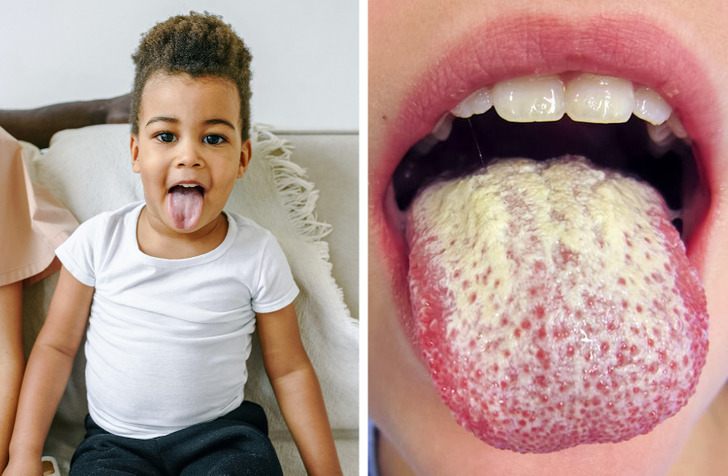
The white film may cover the entire tongue, part of it, or appear as spots. At the same time, an unpleasant odor and taste in the mouth may appear. It looks as if there are small white hairs on the tongue’s surface. In fact, they are buds covered with organic particles, bacteria, and dead cells.
White plaque on the tongue (which can also be yellow) may appear for different reasons, like due to irritation or because of an infection. It usually disappears after several days. If the situation doesn’t change for several weeks, and it’s painful to eat and talk, it’s best to see a doctor.
It’s important to note that the plaque may not only be white. While a pink tongue is normal, a brown tongue means the person drinks too much coffee or tea. A yellow tongue means there’s something wrong with the liver, and a red tongue is a sign that the person lacks vitamin B.
Why the tongue becomes white
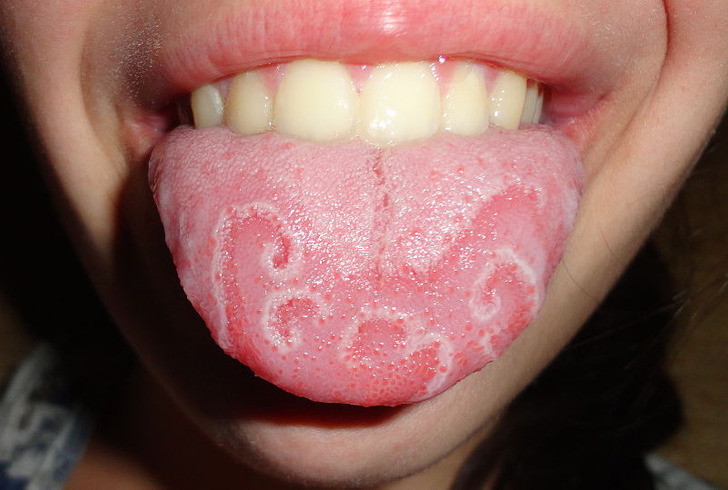
Usually, the tongue becomes white due to bacteria, leftover bits of food, or dead cells that get stuck in between the buds. Because of this, the buds may increase in size or become inflamed. This is how white spots on the tongue’s surface appear.
Sometimes, the plaque appears due to an illness. For example, the geographic tongue is also a condition where white spots appear on the tongue. It’s quite rare, and the causes are unknown, but the condition itself is often connected to eating foods that irritate the tongue. It may also be a reaction to stress, an illness, or hormonal changes.
Why white plaque appears on the tongue
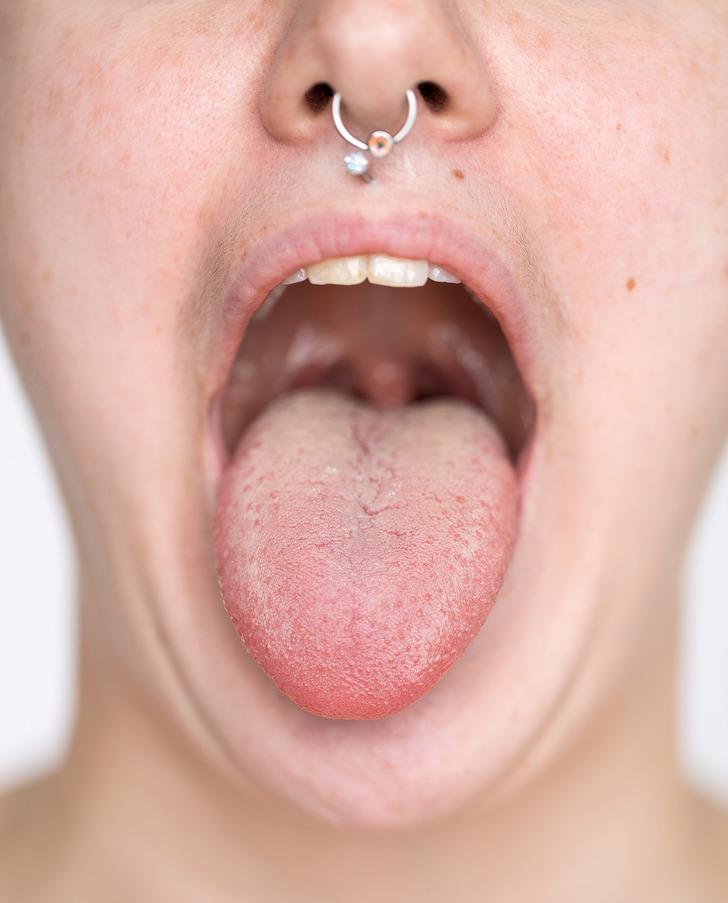
There are some things that make the appearance of white plaque on the tongue more probable:
- Age
- Taking antibiotics (white-yellow plaque appearing when there’s a fungal infection in the mouth)
- A diet that’s lacking enough fruits, vegetables, vitamin B12, and iron
- A weak immune system
- Bad mouth hygiene
- Dental prosthetics or other objects that can damage the tongue
- Dehydration and mouth dryness
What piercings have to do with white tongue
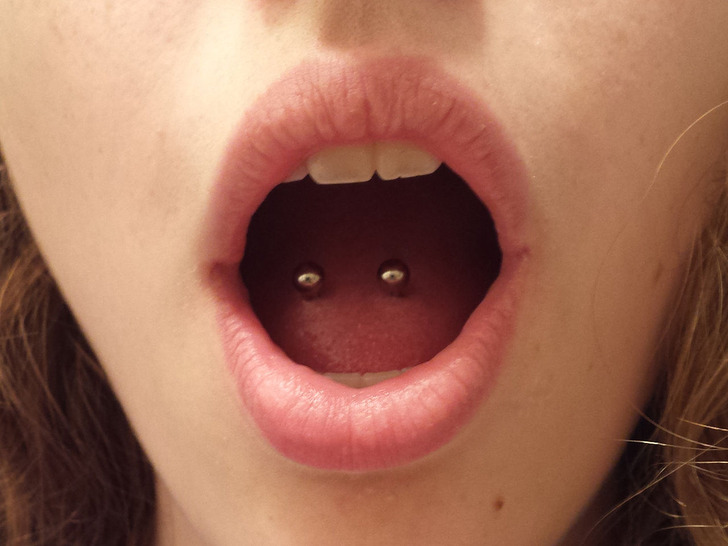
Right after piercing the tongue, there might be some white film present. This happens because the number of bacteria on the tongue increases, and it’s normal. Antibacterial mouthwash will help you get rid of it. Plus, there might be a ring around the piercings, which is normal too, and it means the tissue is healing.
If the plaque appears due to an injury (including piercings), the healing should take around 1.5 weeks. You should avoid irritants, such as hot, spicy, or sour foods and drinks.
How to get rid of white tongue at home
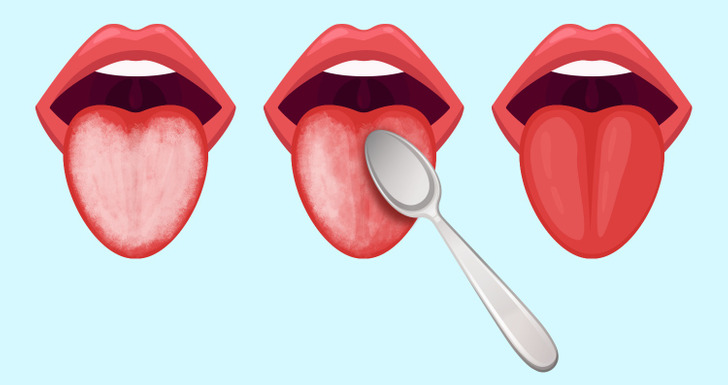
- Practice good mouth hygiene.
- Drink enough water.
- Brush your teeth using a soft toothbrush.
- Use a mild fluoride toothpaste — one that doesn’t contain sodium lauryl sulfate.
- Use fluoride mouthwash.
- Brush your tongue or use a tongue scraper to remove the white coating.
- Drink cold drinks through a straw.
- Avoid food and drinks that are spicy, salty, acidic, or very hot in temperature.
Who to talk to if you’re worried about your white tongue
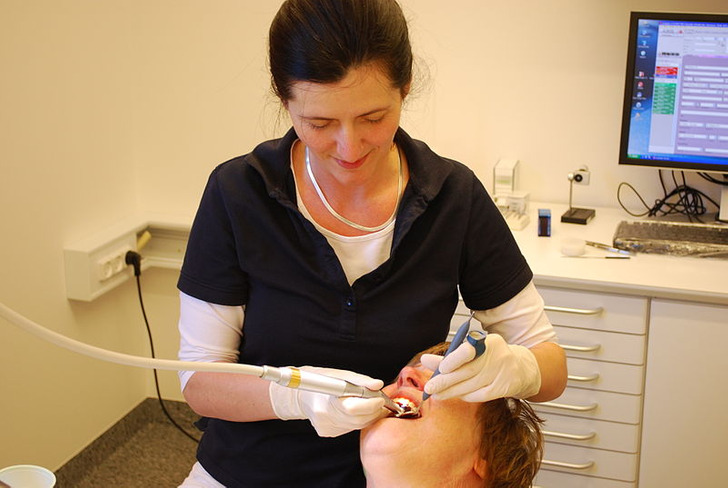
- Your dentist can help you remove the white film from the tongue and prescribe medications if needed.
- Your GP can diagnose the tongue, prescribe you certain medications and determine if the white tongue is an indicator of a more serious issue.
What do you do about white tongue?
Preview photo credit Genusfotografen (genusfotografen.se) & Wikimedia Sverige (wikimedia.se) / Wikimedia Commons, CC BY-SA 4.0, Martanopue / Wikimedia Commons, CC BY-SA 3.0
20 Pairs of People Who Made Us Believe That Time Travel Is Already Possible
Although each person is born with a unique set of genes, when kids are born, it’s impossible to avoid conversations about who they look the most like. And some people are lucky enough to find resemblances to their older ancestors, like a bolt from the blue. With children looking like an exact copy of their parents and grandparents, we’re almost ready to believe that it’s a result of some kind of reincarnation or wizardry.
And while scientists are still scratching their heads about our genes, we at Bright Side simply can’t help but wonder about what miracles nature is really capable of.
1. Princess Diana and her grandmother, Cynthia, made us wonder whether time travel already exists.

2. “A side by side of my 3x great-grandmother and my mother”
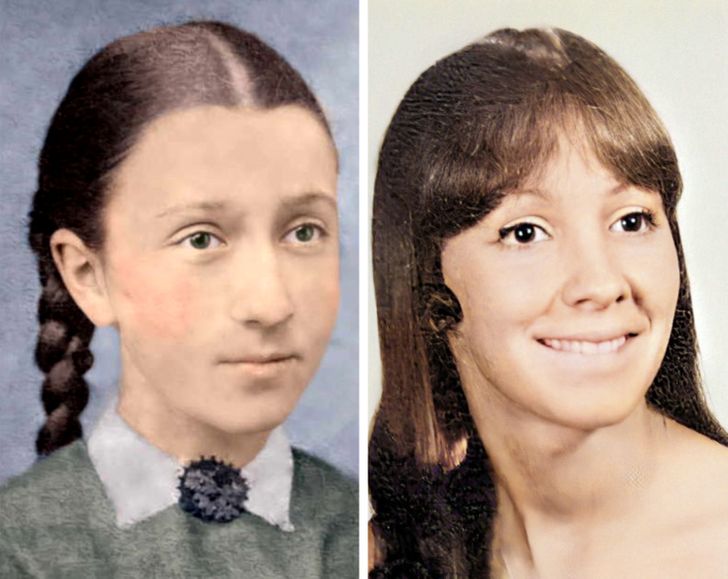
3. “I think I might be a clone and no one told me.”
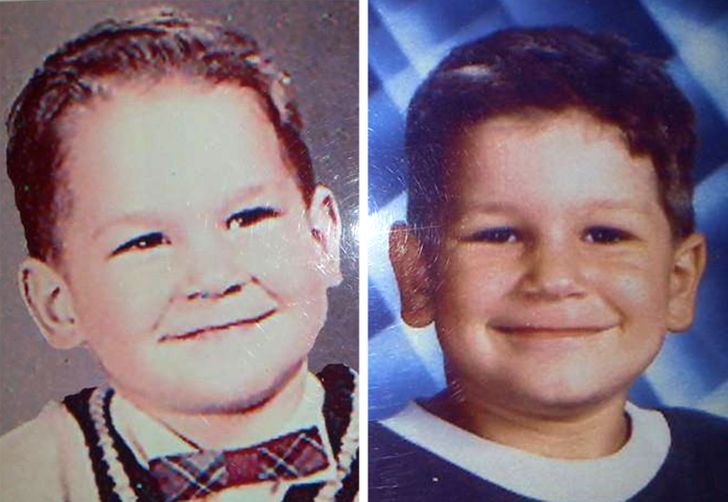
4. This family’s genes are so strong.

5. “My dad and me, 1980 vs 2020”
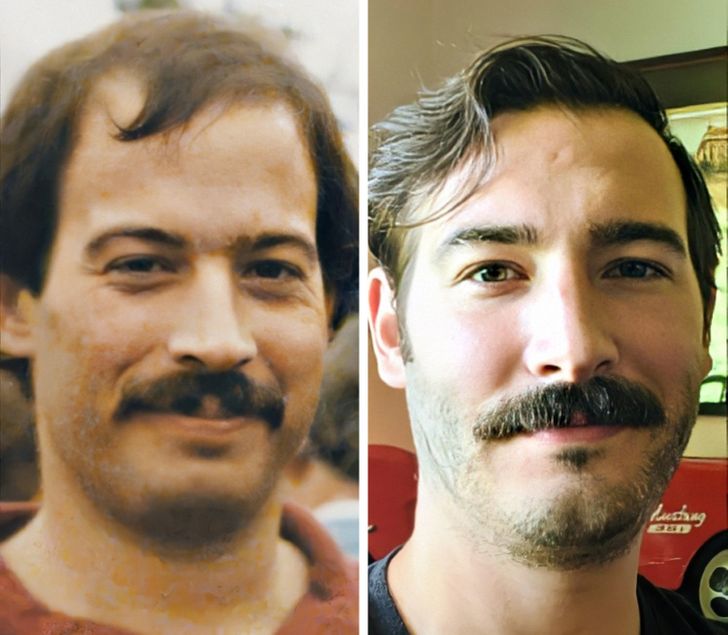
6. “This is me in the mid-’90s and my son in 2020, not quite the same pose, but I like seeing the similarities!”
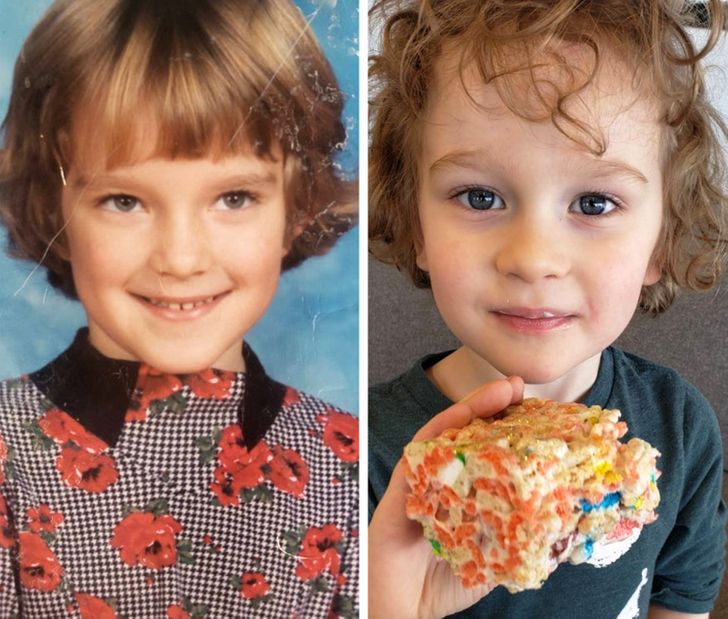
7. “My grandmother (1940) and me (2005) — I feel grateful to carry on her lovely genes.”
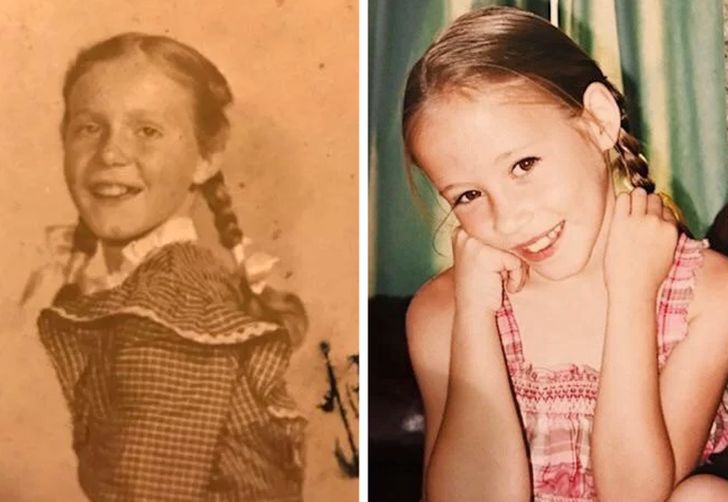
8. “I think it’s fun to look at my dad at 12 vs me at 12.”

9. “Me vs my mom’s yearbook photo (1977)”

10. “My son at a year old in 2004 and his great-great-grandfather at the same age in 1882”
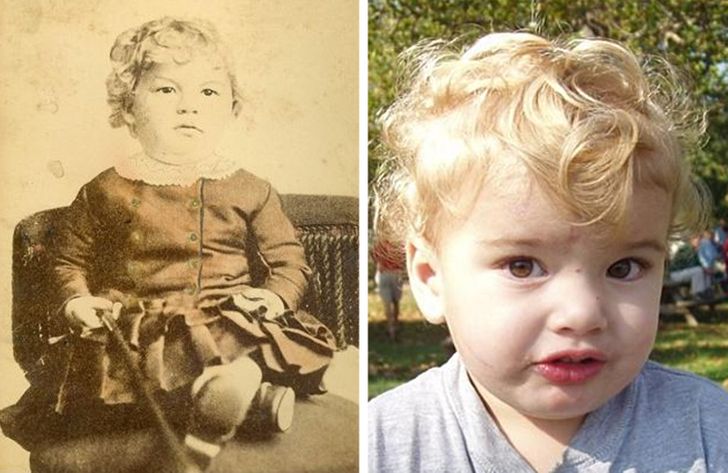
11. “My whole life people have told me I look just like my mom when she was my age. I never saw it until I found this old picture of my mom.”
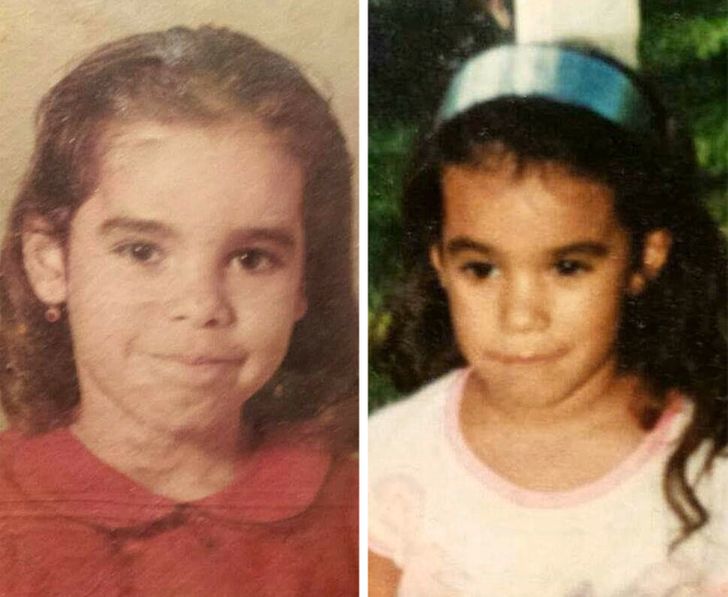
12. Nature’s miracles with genes will never cease to amaze us.

13. “My dad and me, both at the age of 14”

14. “Found this old picture of my great-grandma. I was amazed at how much I look like her!”

15. This mom and daughter look almost identical.

16. Seems like sometimes nature works like a 3D printer.

17. This granddaughter has features similar to her grandmother, and they both look so beautiful.
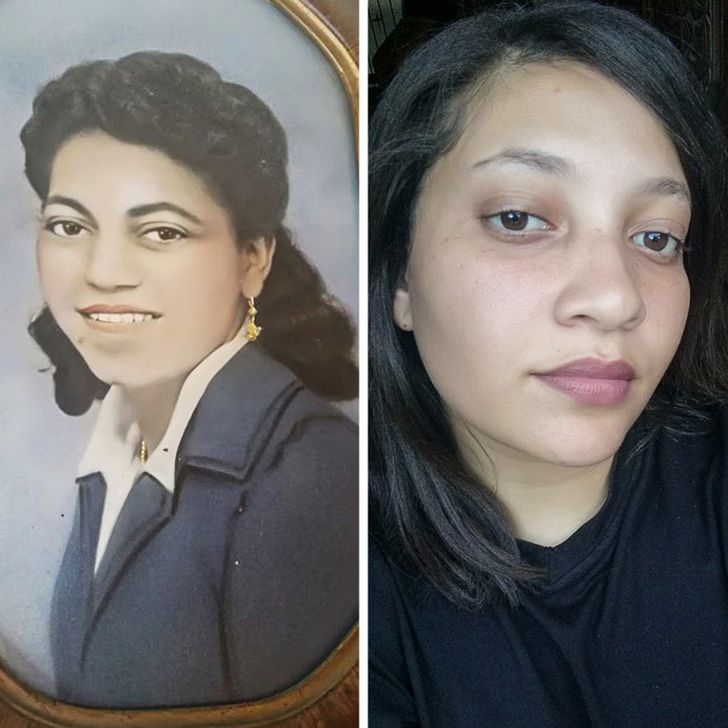
18. “My ancestor from the 1700s next to my dad — apparently my family’s looks haven’t changed much.”

19. “My dad’s mother and me, 70 years apart”

20. This bright smile passed through at least 2 generations.

Bonus: Princess Charlotte and Queen Elizabeth might not look alike, but the princess is surely the queen’s mini-me.
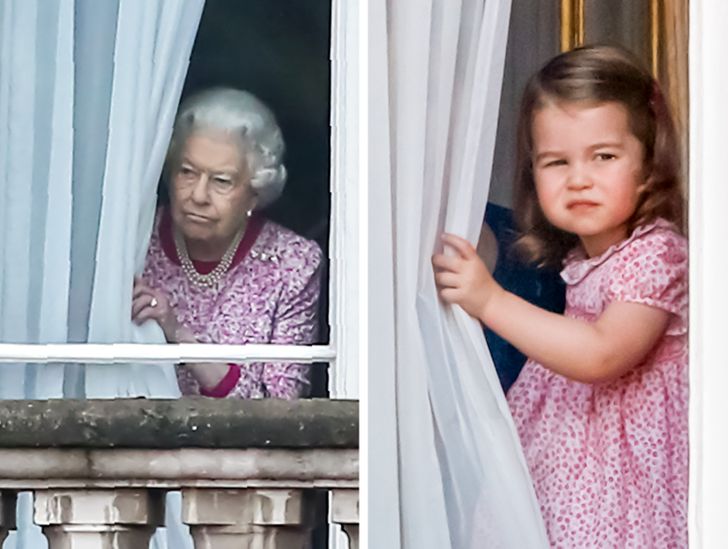
Have you seen this kind of resemblance in real life? Do you know any relatives that look like you?
Preview photo credit JUSTIN TALLIS /AFP / Getty Images, Max Mumby/Indigo / Getty Images Entertainment / Getty Images



Leave a Reply